- Home
- Orhan Pamuk
My Name is Red Page 42
My Name is Red Read online
Page 42
“Not at all, it’s simply because illustrations of your bad side bring in more money,” said the infidel. We two dervishes were dumbfounded at the soundness of the painter’s reasoning.
“If it brought you more money, would you paint the Devil in a favorable light?” the Hoja Effendi said, coyly trying to start an argument, but as you can see from this picture, the Venetian was a genuine artist, and he’d focused upon the work before him and the money it’d bring rather than heeding the Hoja’s empty prattle.
He did indeed paint us, and then slid us into the leather portfolio on the back of his horse’s saddle, and returned to his infidel city. Soon afterward, the victorious armies of the Ottomans conquered and plundered that city on the banks of the Danube, and the two of us ended up coming back this way to Istanbul and the Royal Treasury. From there, copied over and over, we moved from one secret book to another, and finally arrived at this joyous coffeehouse where coffee is drunk like a rejuvenating, invigorating elixir. Now then:
A Brief Treatise on Painting, Death and Our Place in the World
The Hoja Effendi from Konya, whom we’ve just mentioned, has made the following claim somewhere in one of his sermons, which are written out and collected in a thick tome: Kalenderi dervishes are the unnecessary dross of the world because they don’t belong to any of the four categories into which men are divided: 1. notables, 2. merchants, 3. farmers and 4. artists; thus, they are superfluous.
Additionally, he said the following: “These two always tramp about as a pair and always argue about which of them will be the first to eat with their only spoon, and those who don’t know that this is a sly allusion to their true concern — who’ll be the first to bugger the other — find it amusing and laugh. His Excellency Please-Don’t-Take-It-Wrong Hoja has uncovered our secret because he, along with us, the pretty young boys, apprentices and miniaturists, are all fellow travelers on the same path.”
The Real Secret
However, the real secret is this: While the Frank infidel was making our picture, he gazed at us so sweetly and with such attention to detail that we took a liking to him and enjoyed being depicted by him. But, he was committing the error of looking at the world with his naked eye and rendering what he saw. Thus, he drew us as if we were blind although we could see just fine, but we didn’t mind. Now, we’re quite content, indeed. According to the Hoja, we’re in Hell; according to some unbelievers we’re nothing but decayed corpses and according to you, the intelligent society of miniaturists gathered here, we’re a picture, and because we’re a picture, we stand here before you as though we were alive and well. After our run-in with the respected Hoja Effendi and after walking from Konya to Sivas in three nights, through eight villages, begging all the way, one night we were beset by such cold and snow that we two dervishes, hugging each other tightly, fell asleep and froze to death. Just before dying I had a dream: I was the subject of a painting that entered Heaven after thousands and thousands of years.
FIFTY-TWO
IT IS I, MASTER OSMAN
They tell a story in Bukhara that dates back to the time of Abdullah Khan. This Uzbek Khan was a suspicious ruler, and though he didn’t object to more than one artist’s brush contributing to the same illustration, he was opposed to painters copying from one another’s pages — because this made it impossible to determine which of the artists brazenly copying from one another was to blame for an error. More importantly, after a time, instead of pushing themselves to seek out God’s memories within the darkness, pilfering miniaturists would lazily seek out whatever they saw over the shoulder of the artist beside them. For this reason, the Uzbek Khan joyously welcomed two great masters, one from Shiraz in the South, the other from Samarkand in the East, who’d fled from war and cruel shahs to the shelter of his court; however, he forbade the two celebrated talents to look at each other’s work, and separated them by giving them small workrooms on opposite ends of his palace, as far from each other as possible. Thus, for exactly thirty-seven years and four months, as if listening to a legend, these two great masters each listened to Abdullah Khan recount the magnificence of the other’s never-to-be-seen work, how it differed from or was oddly similar to the other’s. Meanwhile, they both lived dying of curiosity about each other’s paintings. After the Uzbek Khan’s life had run its long tortoiselike course, the two old artists ran to each other’s rooms to see the paintings. Later still, sitting upon either edge of a large cushion, holding each other’s books on their laps and looking at the pictures that they recognized from Abdullah Khan’s fables, both the miniaturists were overcome with great disappointment because the illustrations they saw weren’t nearly as spectacular as those they’d anticipated from the stories they’d heard, but instead appeared, much like all the pictures they’d seen in recent years, rather ordinary, pale and hazy. The two great masters didn’t then realize that the reason for this haziness was the blindness that had begun to descend upon them, nor did they realize it after both had gone completely blind, rather they attributed the haziness to having been duped by the Khan, and hence they died believing dreams were more beautiful than pictures.
In the dead of night in the cold Treasury room, as I turned pages with frozen fingers and gazed upon the pictures in books that I’d dreamed of for forty years, I knew I was much happier than the artists in this pitiless story from Bukhara. It gave me such a thrill to know, before going blind and passing into the Hereafter, that I was handling the very books whose legends I’d heard about my whole life, and at times I would murmur, “Thank you, God, thank you” when I saw that one of pages I was turning was even more marvelous than its legend.
For instance, eighty years ago Shah Ismail crossed the river and by the sword reconquered Herat and all of Khorasan from the Uzbeks, whereupon he appointed his brother Sam Mirza governor of Herat; to celebrate this joyous occasion, his brother, in turn, had a manuscript prepared, an illuminated version of a book entitled The Convergence of the Stars, which recounted a story as witnessed by Emir Hüsrev in the palace of Delhi. According to legend, one illustration in this book showed the two rulers meeting on the banks of a river where they celebrated their victory. Their faces resembled the Sultan of Delhi, Keykubad, and his father, Bughra Khan, the Ruler of Bengal, who were the subjects of the book; but they also resembled the faces of Shah Ismail and his brother Sam Mirza, the men responsible for the book’s creation. I was absolutely certain that the heroes of whichever story I conjured while looking at the page would appear there in the sultan’s tent, and I thanked God for giving me the chance to see this miraculous page.
In an illustration by Sheikh Muhammad, one of the great masters of the same legendary era, a poor subject whose awe and affection for his sultan had reached the level of pure love was desperately hoping, as he watched the sultan play polo, that the ball would roll toward him so he could grab it and present it to his sovereign. After he’d waited long and patiently, the ball did indeed come to him, and he was depicted handing it to the sultan. As had been described to me thousands of times, the love, awe and submission that a poor subject aptly feels toward a great khan or an exalted monarch, or that a handsome young apprentice feels toward his master, was rendered here with such delicacy and deep compassion, from the extension of the subject’s fingers holding the ball to his inability to summon the courage to look at the sovereign’s face, that while looking at this page, I knew there was no greater joy in the world than to be apprentice to a great master, and that such submissiveness verging on servility was no less a pleasure than being master to a young, pretty and intelligent apprentice — and I grieved for those who would never know this truth.
I turned the pages, gazing hurriedly but with rapt attention upon thousands of birds, horses, soldiers, lovers, camels, trees and clouds, while the Treasury’s happy dwarf, like a shah of elder days given the opportunity to exhibit his riches and wealth, proudly and undauntedly removed volume after volume from chests and placed them before me. From two separate corners of an iron che
st stuffed with amazing tomes, common books and disorderly albums, there emerged two extraordinary volumes — one bound in the Shiraz style with a burgundy cover, the other bound in Herat and finished with a dark lacquer in the Chinese fashion — which contained pages so resembling each other that at first I thought they were copies. While I was trying to determine which book was the original and which the copy, I examined the names of the calligraphers on the colophons, looked for hidden signatures, and finally came to the realization, with a shudder, that these two volumes of Nizami were the legendary books that Master Sheikh Ali of Tabriz had made, one for the Khan of the Blacksheep, Jihan Shah, and the other for the Khan of the Whitesheep, Tall Hasan. After he was blinded by the Blacksheep shah to prevent him from making another version of the first volume, the great master artist took refuge with the Whitesheep khan and created a superior copy from memory. To see that the pictures in the second of the legendary books, made when he was blind, were simpler and purer, while the colors in the first volume were more lively and invigorating, reminded me that the memory of the blind exposes the merciless simplicity of life but also deadens its vigor.
Since I myself am a genuine great master, so acknowledged by Almighty Allah, who sees and knows all, I knew that one day I would go blind, but is this what I wanted now? Since His presence could be sensed quite nearby in the exquisite and terrifying darkness of the cluttered Treasury, like a condemned man who wishes to look upon the world one last time before he is beheaded, I asked Him: “Allow me to see all these illustrations and have my fill of them.”
As I turned the pages, by the force of God’s inscrutable wisdom, I frequently came across legends and matters of blindness. In the famous scene showing Shirin on a countryside outing falling in love with Hüsrev after seeing his picture on the branch of a plane tree, Sheikh Ali Riza from Shiraz had drawn distinctly all the leaves of the tree one by one so they filled the entire sky. In answer to a fool who saw the work and commented that the true subject of the illustration wasn’t the plane tree, Sheikh Ali replied that the true subject wasn’t the passion of the beautiful young maiden either, it was the passion of the artist, and to proudly prove his point he attempted to paint the same plane tree with all its leaves on a grain of rice. If the signature hidden beneath the beautiful feet of Shirin’s darling lady attendants hadn’t misled me, I was of course seeing the magnificent tree made by the blind master on paper — not the tree made on a grain of rice, which he left half finished, having gone blind seven years and three months after he started the task. On another page, Rüstem blinding Alexander with his forked arrow was depicted in the manner of artists who knew the Indian style, so vivaciously and colorfully, that blindness, the ageless sorrow and secret desire of the genuine miniaturist, appeared to the observer as the prologue to a joyous celebration.
My eyes wandered over these pictures and volumes, no less with the excitement of one who wanted to behold for himself these legends he’d heard about for years than with the worry of an old man who sensed he would soon enough never see anything more. There, in the cold Treasury room suffused with a dark red that I’d never seen before — caused by the color of the cloth and dust within the peculiar light of the candles — I would occasionally cry out in admiration, whereupon Black and the dwarf would rush to my side and look over my shoulder at the magnificent page before me. Unable to restrain myself, I’d begin to explain:
“This color red belongs to the great master Mirza Baba Imami from Tabriz, the secret of which he took with him to the grave. He’s used it for the edges of the carpet, the red of Alevi allegiance on the Persian Shah’s turban, and look, it’s here on the belly of the lion on this page and on this pretty boy’s caftan. Allah never directly revealed this fine red except when He let the blood of his subjects flow. So that we might wearily strive to find this variety of red that is only visible to the naked eye on man-made cloth and in the pictures of the greatest of masters, God did, however, consign its secret to the rarest of insects living beneath stones,” I said and added, “Thanks be to Him who has now revealed it to us.”
“Look at this,” I said much later, once again unable to refrain from showing them a masterpiece — this one could’ve belonged in any collection of ghazals, which spoke of love, friendship, spring and happiness. We looked at the trees of springtime blooming in an array of color, the cypresses in a garden reminiscent of Heaven and the elation of the beloveds reclining in that garden as they drank wine and recited poetry; it was as if we in the moldy, dusty and icy Treasury could also smell those spring blossoms and the delicately scented skin of the joyous revelers. “Notice how the same artist who rendered the forearms of the lovers, their beautiful naked feet, the elegance of their stances and the lazy delight of the birds fluttering about them with such sincerity, also made the crude shape of the cypress in the background!” I said, “This is the work of Lütfi of Bukhara whose ill-temper and belligerence caused him to leave each of his illustrations half finished; he fought with every shah and khan claiming that they understood nothing of painting, and he never remained in one city for long. This great master went from one shah’s palace to another, from city to city, quarreling all the way, never able to find a ruler whose book was deserving of his talents, until he ended up in the workshop of an inconsequential chieftain who ruled over nothing but bare mountaintops. Claiming that “the khan’s dominions might be small but he knows painting,” he spent the remaining twenty-five years of his life there. Whether he ever knew that this inconsequential lord was blind remains, even today, a subject of conjecture and a source of humor.”
“Do you see this page?” I said well into the night, and this time they both rushed to my side, candlesticks aloft. “From the time of Tamerlane’s grandchildren to the present, this volume has seen ten owners on its way here from Herat over a span of one hundred fifty years.” Using my magnifying lens, the three of us read the signatures, dedications, historical information and names of sultans — who’d strangled one another — filling every corner of the colophon page, pinched together, between and on top of each other: “This volume was completed in Herat, with the help of God, by the hand of Calligrapher Sultan Veli, son of Muzaffer of Herat, in the year of the Hegira 849 for Ismet—üd Dünya, the wife of Muhammad Juki the victorious brother of the Ruler of the World, Baysungur.” Later still, we read that the book had passed into the possession of the Whitesheep Sultan Halil, thence to his son Yakup Bey, and thence to the Uzbek sultans in the North, each of whom happily amused himself with the book for a time, removing or adding one or two pictures; beginning with the first owner, they added the faces of their beautiful wives to the illustrations and appended their names proudly to the colophon page; afterward, it passed to Sam Mirza who’d conquered Herat, and he made a present of it, with a separate dedication, for his elder brother, Shah Ismail, who in turn brought it to Tabriz and had it prepared as a gift with yet another dedication. When the denizen of paradise Sultan Selim the Grim defeated Shah Ismail at Chaldiran and plundered the Seven Heavens Palace in Tabriz, the book ended up here in this Treasury in Istanbul, after traveling across deserts, mountains and rivers along with the victorious sultan’s soldiers.
How much of an aging master’s interest and excitement did Black and the dwarf share? As I opened new volumes and turned their pages, I sensed the profound sorrow of thousands of illustrators from hundreds of cities large and small, each with a distinctive temperament, each painting under the patronage of a different cruel shah, khan or chieftain, each displaying his talent and succumbing to blindness. I felt the pain of the beatings we all received during our long apprenticeships, the blows inflicted with rulers, until our cheeks turned bright red, or with marble polishing stones upon our shaven heads, as I flipped — with humiliation — through the pages of a primitive book that displayed methods and implements of torture. I had no idea what this miserable book was doing in the Ottoman Treasury: Instead of seeing torture as a necessary practice administered before the supervision of a judg
e to ensure Allah’s justice in the world, infidel travelers would convince their coreligionists of our cruelty and evil-heartedness by having dishonorable miniaturists abase themselves and dash off these pictures in exchange for a few gold pieces. I was embarrassed at the obvious depraved pleasure with which this miniaturist had drawn pictures of bastinados, beatings, crucifixions, hangings by the neck or the feet, hookings, impalings, firings from cannon, nailings, stranglings, the cutting of throats, feedings to hungry dogs, whippings, baggings, pressings, soakings in cold water, the plucking of hair, the breaking of fingers, the delicate flayings, the cutting off of noses and the removal of eyes. Only true artists like us who’d suffered throughout our apprenticeships merciless bastinados, random pummelings and fists so that the irritable master who drew a line incorrectly might feel better — not to mention hours of blows from sticks and rulers so that the devil within us would perish to be reborn as the jinn of inspiration — only we could feel such extreme joy by depicting bastinados and tortures, only we could color these implements with the gaiety of coloring a child’s kite.
Hundreds of years hence, men looking at our world through the illustrations we’ve made won’t understand anything. Desiring to take a closer look, yet lacking the patience, they might feel the embarrassment, the joy, the deep pain and pleasure of observation I now feel as I examine pictures in this freezing Treasury — but they’ll never truly know. As I turned the pages with my old fingers numbed from the cold, my trusty mother-of-pearl-handled magnifying lens and my left eye passed over the pictures like an old stork traversing the earth, little surprised by the view below, yet still astonished to see new things. From these pages withheld from us for years, some of them legendary, I came to know which artist had learned what from whom, in which workshop under which shah’s patronage the thing we now call “style” first took shape, which fabled master had worked for whom, and how, for example, the curling Chinese clouds I knew had spread throughout Persia from Herat under Chinese influence were also used in Kazvin. I would occasionally allow myself an exhausted “Aha!”; but an agony lurked deeper within me, a melancholy and regret I can scarcely share with you for the belittled, tormented, pretty, moon-faced, gazelle-eyed, sapling-thin painters — battered by masters — who suffered for their art, yet remained full of excitement and hope, enjoying the affection that developed between them and their masters and their shared love of painting, before succumbing to anonymity and blindness after long years of toil.

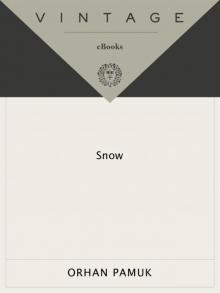 Snow
Snow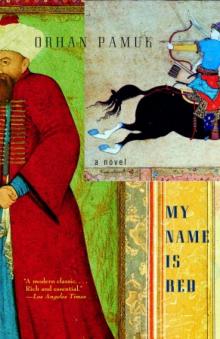 My Name is Red
My Name is Red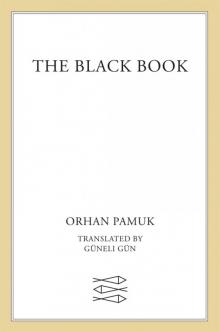 The Black Book
The Black Book The Innocence of Memories
The Innocence of Memories The White Castle
The White Castle Other Colors
Other Colors Silent House
Silent House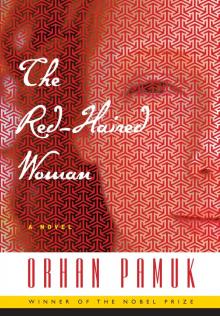 The Red-Haired Woman
The Red-Haired Woman The Museum of Innocence
The Museum of Innocence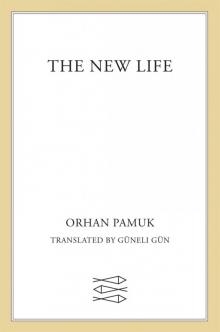 The New Life
The New Life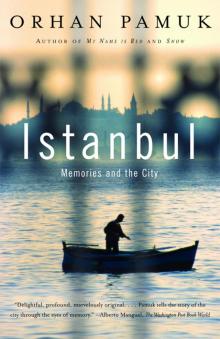 Istanbul
Istanbul